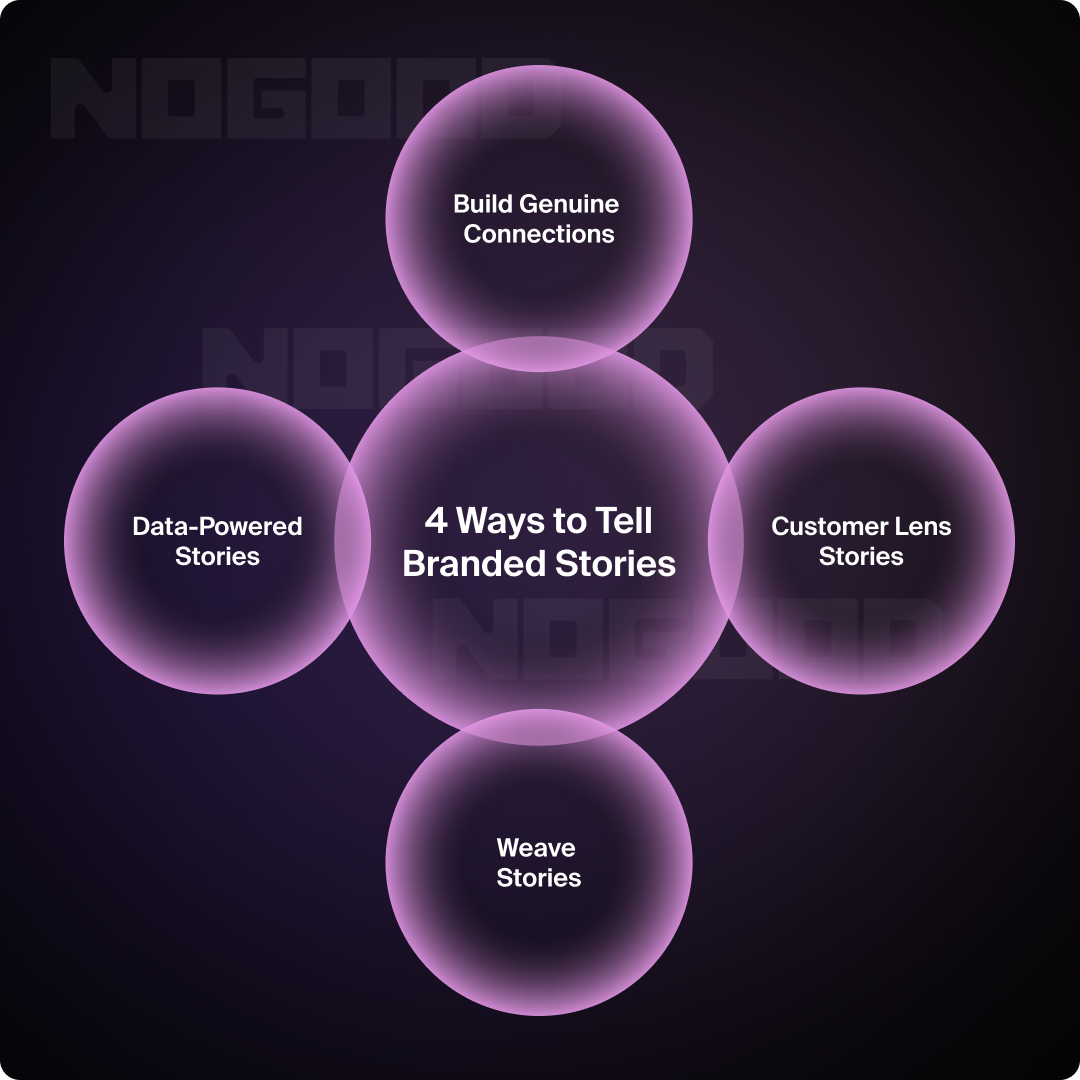Is AI the latest fashion accessory?
📰 NoGood News Vol. 106 | The Stream Ring and the rise of AI wearables
Hi NoGoodies,
Welcome to NoGood News, your bi-weekly pulse on all things growth. We break down successful brand campaigns, provide you with the best guides for all things growth marketing, and share emerging trends and insights to keep you ahead of the curve. Plus, exclusive interviews with some of the best in the game.
Here's a quick TL;DR of what's below:
The rise of AI wearables: AI wearables keep flopping, and everyone’s making the same mistake. Except this one startup.
Breaking down SEO psychology: When you apply psychology principles to SEO, you stop treating keywords as just words and start treating them as clues into human intent.
The formula behind branded content storytelling: News flash—your brand isn’t the main character. Your customer is.
Ready? Let's get into it.
💍 The rise of AI wearables
Why AI wearables are redefining how we interact with AI
Sandbar just dropped the Stream ring – an AI wearable designed by ex-Meta employees that lets users whisper their inner monologues into it.
With a tap, Stream records your voice and turns it into notes, lists, or answers to questions by searching the web.
Sandbar is betting on removing the friction between humans and AI chatbots, but remember Friend AI’s necklace?
Friend spent over $1 million plastering NYC subways with ads, only to have them defaced with graffiti.
Then there was Humane’s AI Pin – the $699 device that flopped so badly that HP acquired Humane’s assets for $116 million.
It’s clear that AI wearables have so far been a huge miss, so why does Sandbar think it’ll be different?
They didn’t position AI as a replacement.
The sentiment around AI adoption is mixed, with people wary of surveillance and tired of tech that demands they change their behavior.
Friend and Humane ignored this entirely.
Friend marketed themselves as a replacement for human connection, while Humane positioned their AI Pin as a phone replacement.
Meanwhile, Sandbar leads with humans as the hero, not AI.
Not only does it tap into an already successful category (smart rings), they position themselves as a seamless tool that’s already on your finger.
A smart ring that happens to have AI voice features.
That’s where startups can thrive – by focusing on customer experience and sentiment, rather than just tapping into a market because there’s less competition.
And the most successful AI wearables will be the ones that integrate technology and lifestyle seamlessly, not force us to change how we live.
What are your thoughts on AI wearables?
🔍 Breaking down SEO psychology
How to apply psychological principles to your SEO strategy
Humans are messy; algorithms are neat. The magic is in the overlap.
SEO psychology means studying how people actually behave when they’re searching, clicking, and deciding whether your website is worth their precious three seconds of attention. It’s not about tricking Google’s algorithm, but instead about understanding the workings of the human brain to build an SEO strategy around them.
Consider this: Google ranks pages based on its complicated algorithm, but users (aka people) are the ones doing the clicking; and people don’t always click logically. They may click the headline that looks like the safe bet, or ones that capture curiosity or validate what they already think.
Users trust a .gov link because “official = smart”. They click the first result (or skip the sponsored results and click the first organic one) because scrolling feels like work, and if it’s #1, it’s gotta be good, right? And they’ll believe 5 stars from strangers on the internet more than a backed recommendation by someone who knows more than they do.
That, my friends, is psychology.
When you apply psychology principles to SEO, you stop treating keywords as just words and start treating them as clues into human intent. It’s less about what people say they want, and more about what their behavior shows they’re actually looking for.
📕 The formula behind branded content storytelling
The shift from selling products to sharing narratives
Consumers are growing tired of being sold to. Feeds are turning into ones that feel less like a place for connection and more like a storefront. Even algorithms, once designed to tailor content to our interests, have become thinly veiled marketplaces pushing whatever’s trending.
Enter narratives. A way to tell a story from a customer’s perspective that gives audiences a reason to stop the scroll. That’s why we’re seeing the rise of branded content storytelling. It flips the script: it’s no longer about spotlighting a product, but about creating narratives that elevate a customer’s experience.
4 Ways To Do Branded Storytelling Right
Build genuine connections: Genuine connections tap into real human emotions and experiences. To build them, start by understanding your audience beyond FYPs and algorithms.
Tell stories through the customer’s lens: Your customer is the hero of your brand story, not you (sorry, not sorry!). By framing stories around their journey, challenges, and aspirations, you create narratives that feel personal and relatable.
Use data to power stories: Use customer data to your advantage. With properly crafted dashboards, you can understand your audience’s pain points, preferences, and behavior so you can craft stories that resonate.
Weave stories across channels: Consistency ensures that every touchpoint, from short-form to long-form content, reinforces the same narrative, voice, and emotional tone. This repeated exposure builds recognition over time, making your brand feel reliable against your competitors.
🎙️ Q&A with an expert
A bi-weekly interview series with the best in the game
Q: How does human behavior overlap with algorithm-driven SEO strategies?
A: I would argue that human behavior is what drives algorithmic SEO strategies. Algorithms are like professional people-watchers; they reward whatever users click, trust, and stick around for. In other words: when you optimize for humans, the algorithm can’t help but follow. Here are some examples of this in practice:
Primacy effect → CTR targeting: Users click the first good option; algorithms reward results that win clicks (titles/snippets, featured snippets, PAA, AIO “position zero”).
Authority bias → E-E-A-T: Humans trust “official.” Google models that with author creds, citations, high-quality links, brand/entity strength.
Social proof → Rich results & trust cues: Reviews/testimonials reduce decision anxiety; schema surfaces stars in SERP and boosts engagement.
Loss aversion → Copy/CTA framing: “Don’t lose X” nudges clicks; better engagement → better behavioral signals (dwell time)
UX heuristics → Speed & clarity: Fast, clean pages “feel” credible; Core Web Vitals + strong engagement reinforce rankings.
AI Overviews → Reputation echo: AIOs/LLMs reflect the same human cues (authority, consensus, clarity), so psychology scales into AI recommendations.
Q: What might be the risks of ignoring human behavior / cognitive biases when building an SEO strategy?
A: You can rank and still lose. If your titles don’t spark curiosity, your design doesn’t earn trust, or your CTAs ignore basic psychology, users will bounce faster than you can say “page two.” And Google will take note. And remember, sticking to SEO fundamentals doesn’t mean sacrificing personality. The most clickable content usually sounds like it came from a human, not your SEO handbook. Skip the human part, and eventually, the algorithm skips you too.
✍️ We wish we wrote this
Articles that caught our eye these past 2 weeks:
👀 Keeping up on the socials
Because IYKYK is better than FOMO:
Would you break the bank for a humanoid robot?
Political campaigns are turning into content strategies
Did Mariah Carey cancel Christmas?
Coca-Cola ruins Christmas with AI… again
🚀 Ready to meet your NoGood partner?
Tell us where you are and where you want to be — and we’ll help get you there.





